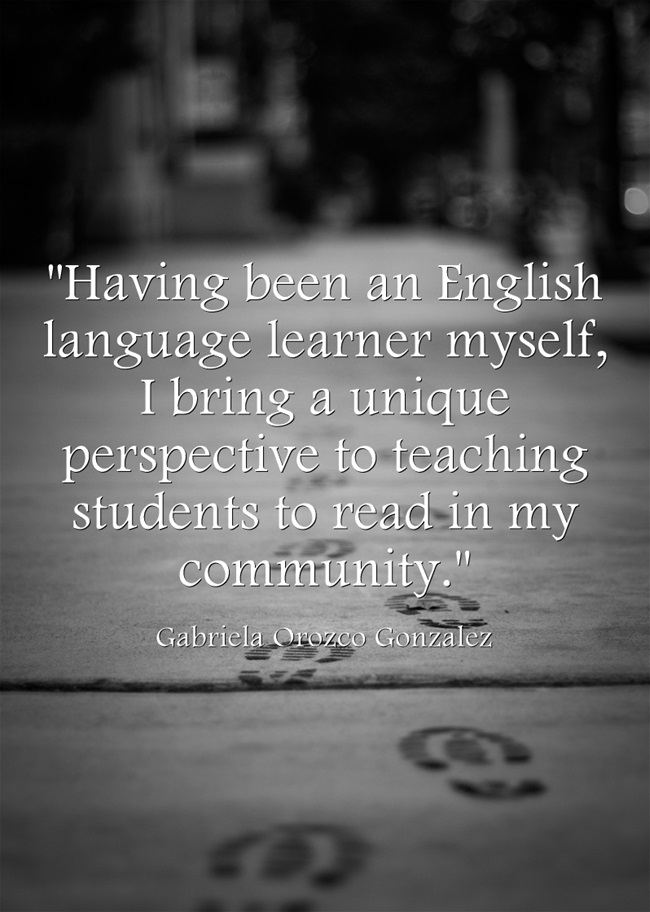Editor’s Note: This commentary by Gabriela Orozco Gonzalez was originally intended for inclusion into my four-part Education Week Teacher series on mistakes made in writing instruction. Because of some confusion, however, I didn’t receive it in time.
Gabriela Orozco Gonzalez is a Teacher at Montebello Gardens Elementary School in the Montebello Unified School District in Pico Rivera, California and is a member of the Instructional Leadership Corps, a collaboration among the California Teachers Association, the Stanford Center for Opportunity Policy in Education, and the National Board Resource Center at Stanford. She is also a blogger and writes about teaching strategies, curriculum, and educational resources. You can read her blog at www.commoncorecafe.blogspot.com.
Teaching students to read is a complex task and most teachers focus on automaticity. Yet, there are so many layers to designing reading instruction to meet the needs of our students. In the sixteen years I have been teaching in Montebello Unified, I have come to understand that it is not just about the automaticity of vocabulary, defining words, or ensuring that students know the multiple meanings for every word they read. To teach reading effectively, teachers must focus on providing students with numerous opportunities to use their newly acquired language in everyday conversations.
Having been an English language learner myself, I bring a unique perspective to teaching students to read in my community. I have noticed that teachers commonly want to automate vocabulary by using visual cues, apps, and other tech resources. While they can be a resource to teaching vocabulary, it is essential for students to not just recognize words, but also understand them. The teaching challenge is providing students with opportunities to interact with the words that they are learning to read. By interacting with the words they have read, they will then be able to understand how to use the newly acquired vocabulary in everyday language.
In my class, I encourage students to talk with each other. I use collaborative groups to promote conversations. I want my students to feel excited about learning new words and demonstrating how they can use them when they are engaged in discussions. I foster a culture of enthusiasm when students use their new words. I allow students to create their own vocabulary lists. Student-generated vocabulary word lists can be exceptionally meaningful, since the students choose the words and they are more likely to see it as useful to their everyday lives and remember it.
I encourage students to draw pictures and add them to their interactive notebook or word list. I challenge students to use vocabulary words, both in writing and during discussions. I expose readers to a wide variety of text genres, including newspaper and magazine articles, novels, and websites. I urge students to be text detectives and use a variety of tools to investigate and discover new words to add to their language reserves. During student discussions, I invite students to talk about what they noted while reading and allow them to facilitate the discussion on the key vocabulary. I support their efforts to think deeply and make connections across the text. For example, a student may notice an illustration in their reading that connects to a newly acquired word. As a follow up, I may ask the students to use the words they made connections with in their group discussions. As the students are actively engaged in discussions, I monitor their conversations and take anecdotal notes of the words they commonly use. Then, I use these notes to plan the following reading lesson.
With these techniques, reading instruction focuses on students’ language use in everyday conversations in order to build meaning and understanding. Try out these techniques and share your experiences at www.commoncorecafe.blogspot.com.





Recent Comments